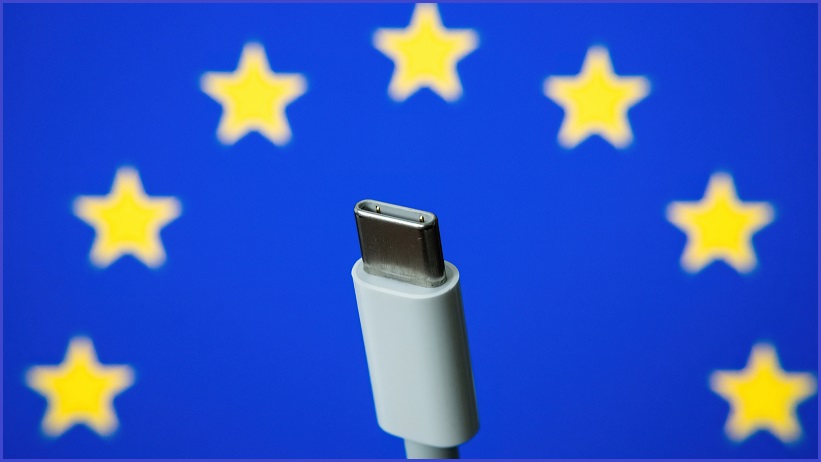The 2024 Christmas shopping season will see European consumers buying Apple iPhones and other devices with USB-C charging ports, after the European Union (EU) agreed to force electronics companies to standardise on the format for nearly all devices sold in the EU.
The newly approved rules – which have been in discussions for nearly a decade and were formally introduced last September – will amend the EU Radio Equipment Directive to mandate a single charging solution for devices including mobile phones, tablets, e-readers, earbuds, digital cameras, headphones and headsets, handheld videogame consoles, and portable speakers.
Laptop makers will also be forced to adapt the USB-C standard within 40 months after the legislation comes into force.
The new rules impose a standard for fast charging, to ensure that devices can be charged at the same speed no matter which charger is used.
Passed last week by the EU’s Internal Market and Consumer Protection Committee, the new rules are expected to save consumers up to $375m (€250m) annually by saving them from having to buy often incompatible chargers for every electronic device they own.
Many of those chargers remain unused, with consumers estimated to be disposing of 11,000 tonnes of e-waste annually.
“With every three chargers we get in our homes, we don’t even remove one from the packaging,” Parliament rapporteur Alex Agius Saliba explained.
“It is not an issue of imposing just one common charger,” he said. “It is an issue of giving information to our consumers and giving them the option to buy a device with or without a charger… and not being penalised for that. If a device becomes obsolete, you can still be using the charger, and will not need to throw it away.”
To this end, the new rules also mandate clear labelling on devices about charging options and whether the package includes a charger.
Exceptions to the rule apply for devices that are too small to have a USB-C port, such as smart watches, health trackers, and other sports equipment.
By 2026, EU Parliamentarians also want to see a strategy to provide “minimum interoperability” of new wireless charging solutions, which can vary in power and often use proprietary standards that prevent them from charging any device.
A redesign for Apple
Although many device makers have already transitioned to using USB-C ports, the new rules have been closely watched for their impact on Apple – which has long argued that a single connector standard would stifle innovation.
More than one billion iPhones and iPads use the company’s 8-pin Lightning connector, which was introduced in 2012 as a slimline alternative to the 30-pin connector it launched in 2003.
Lightning was designed as a “modern connector for the next decade,” Apple senior vice president of worldwide marketing Phil Schiller presciently said in introducing the new design, noting that its 80 per cent size reduction made “a huge difference in the world’s thinnest smartphone.”
A decade later, the EU’s decision will force Apple to integrate USB-C ports – which, as one comparison showed, require more space than Lightning connectors.
Within the cramped confines of the iPhone’s microelectronics, accommodating slightly bigger ports can be harder than it seems, although recent reports suggest that Apple is already testing new USB-C equipped devices for launch in 2023 or 2024.
Whether the company will also preserve backwards compatibility by releasing a USB-C to Lightning adaptor – as it did when it transitioned to Lightning connectors – remains to be seen.
Either way, CCS Insight chief analyst Ben Wood said the EU decision “is a victory for common sense, with the EU genuinely trying to do something that’s more environmentally appropriate…. The upsides are going to outweigh the downsides.”
The EU decision is part of a broader ‘ecodesign’ mandate that has also seen the union impose new standards for external power supplies, which came into effect in 2020 and are expected to save 10TWh of energy annually – reducing CO2 emissions by nearly 4m tonnes and saving users $3 billion (€2 billion).










